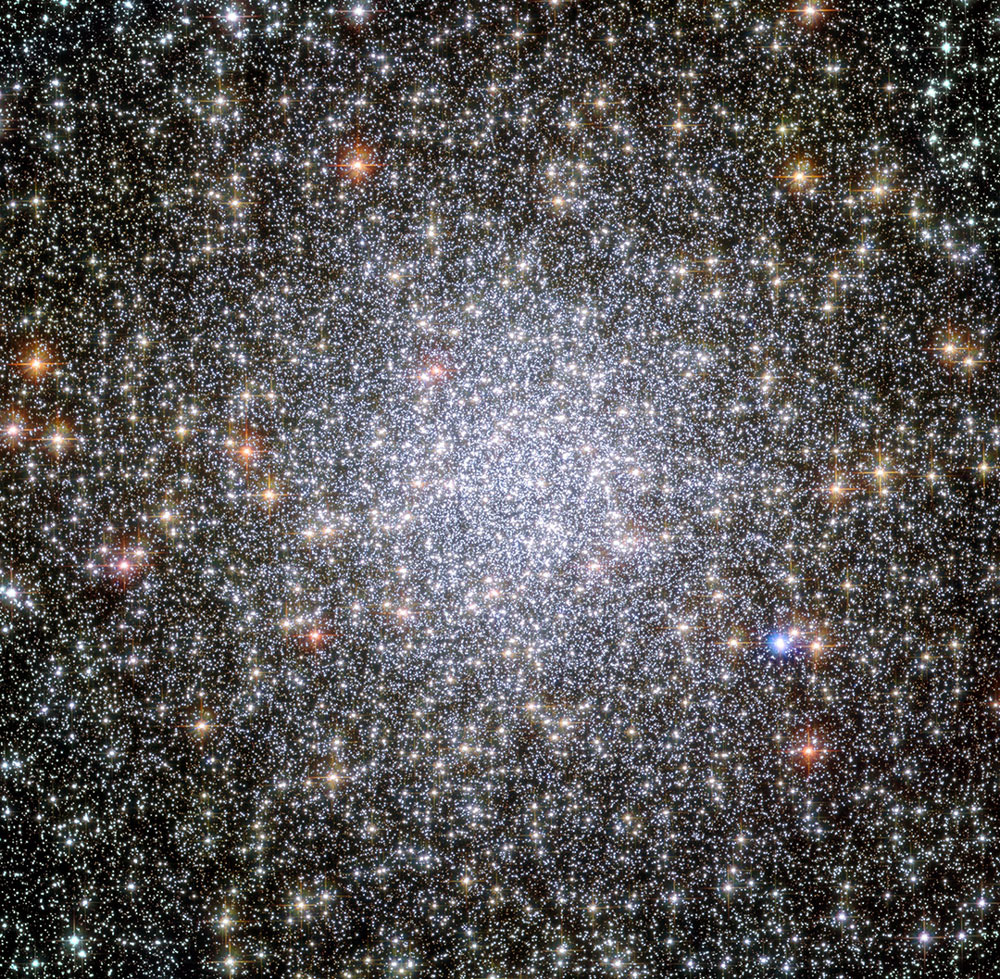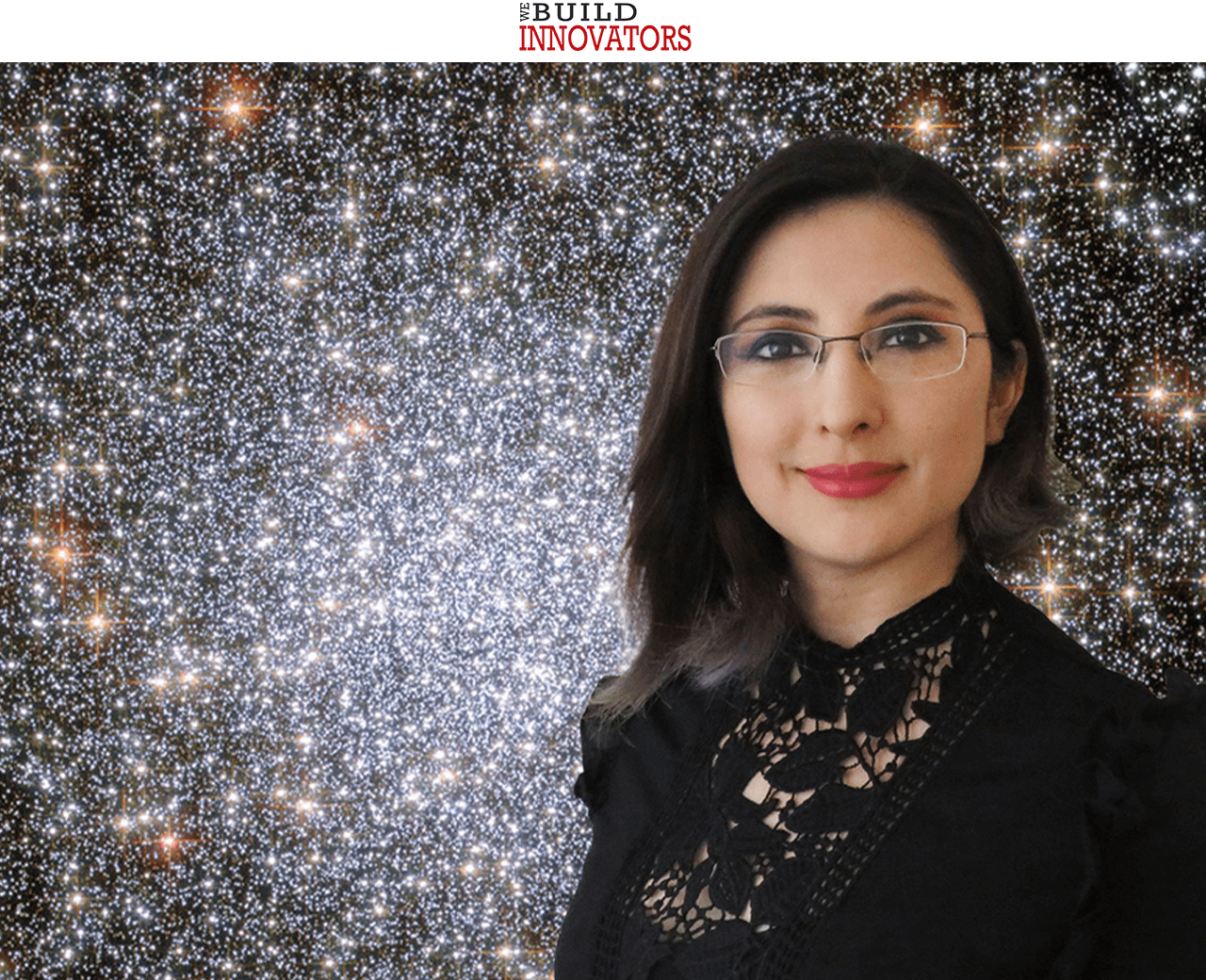Innovative Research
Texas Tech University astrophysicist Liliana Rivera Sandoval is a postdoctoral researcher who has been awarded time on the Hubble Space Telescope to pursue research. (Background image from Hubble Space Telescope courtesy of NASA/ESA.)
Liliana Rivera Sandoval Will Use Hubble Space Telescope in 3 Research Projects
Astrophysicist to Study Compact Binaries in Globular Clusters
7.15.2020 | Glenys Young
For Texas Tech University and the Hubble Space Telescope, three may be this year's magic number. After all, there have now been three exciting events this academic year tying the two together.
And now, Texas Tech postdoctoral research fellow Liliana Rivera Sandoval has achieved the very rare distinction of being awarded two observing times on the Hubble Space Telescope in the upcoming cycle, together with a grant to analyze existing observations. In fact, Rivera Sandoval is one of only 11 researchers worldwide to have been granted at least three proposals in the same observing cycle in the last decade.
"Since Hubble's proposal-selection process is highly competitive, it is very rare for the same person to win three awards as a PI in the same program cycle," said Sung-Won Lee, professor and chair of the Department of Physics & Astronomy. "It is a highly recognized achievement for Liliana to receive multiple observing times on the Hubble Space Telescope."

This NASA/ESA Hubble Space Telescope image shows a globular cluster known as NGC 104—or, more commonly, 47 Tucanae, since it is part of the constellation of Tucana (The Toucan) in the southern sky. After Omega Centauri it is the brightest globular cluster in the night sky, hosting tens of thousands of stars. Scientists using the Hubble Space Telescope have observed the white dwarfs in the cluster. Credit: NASA, ESA, and the Hubble Heritage (STScI/AURA)-ESA/Hubble Collaboration.
Rivera Sandoval will use her observing times on the telescope for three different research projects. In collaboration with fellow researchers at Texas Tech, across the U.S., and in Canada, Europe and Australia, Rivera Sandoval will study accreting white dwarfs and other compact binaries in globular clusters.
White Dwarfs
In the life cycle of sun-like stars, or a few times in more massive ones, the white dwarf stage represents the end of their evolution. Stars, like our sun, eventually run out of nuclear fuel and shrink to smaller, fainter stars about the size of Earth. But with the mass of a sun-sized object packed into such a comparatively tiny volume, the gravity on the surface of a white dwarf is several hundred thousand times that of Earth.
Most stars typically exist in pairs called "binary systems." But what happens when
both
stars in a binary system are white dwarfs? If the stars are close enough, the gravity
of the more massive white dwarf can pull matter away from its companion star, leading
to what astronomers call the accretion process.
A few dozen such binaries have been identified in our solar neighborhood, but never in other environments of our galaxy. That's what two of Rivera Sandoval's projects intend to investigate.
"Until now, these binaries have been predicted to exist in numerous amounts in globular clusters due to the high stellar densities there, but none have been confirmed so far," Rivera Sandoval said. "First, we want to confirm whether these ultracompact, accreting double-white dwarf binaries exist in globular clusters, as has been theorized, and in what amount so we can compare to models.
"We also want to investigate their properties and their mass-accretion process. We aim to explore whether there are differences with systems in the solar neighborhood, as that will give us direct clues on how dense stellar environments affect the creation and evolution of these binaries."
Because of their short orbits, typically less than one hour, double-white dwarf binary systems also are expected to be sources of low-frequency gravitational waves. Gravitational waves are different from electromagnetic waves and represent another tool astronomers can use to study exotic objects in the universe. So, by detecting these systems as gravitational wave sources, scientists ultimately can obtain important information about their components and their history.
"These binaries also are relevant because they are potential progenitors of supernovae type Ia, the type of supernovae that are used to measure distances," Rivera Sandoval said. "So, by using ultraviolet observations with the Hubble Space Telescope, we hope not only to confirm their existence in globular clusters for the first time, but also to discover many of these systems.
"Getting Hubble Space Telescope observations was crucial for our projects because of the unique filters and instruments it has, but also because it is the only telescope capable of resolving single stars in crowded stellar environments."
Cataclysmic Variables
Rivera Sandoval's third project surveys globular clusters for a different type of binary system. Known as cataclysmic variables (CVs), these are binary systems in which a white dwarf accretes mass from a sun-like star.
"Unlike the double-white dwarf binaries, CVs have been confirmed in globular clusters, but many questions are still open," Rivera Sandoval explained.
Among those questions is why the numbers of detected CV systems and the number predicted to exist are substantially different. One potential explanation for this difference is observational biases. This means the way scientists look for these CVs can affect how many they find.
"With our project, we aim to eliminate these biases for the first time," Rivera Sandoval said. "We expect to identify the missing CV population by implementing a technique that uses different types of Hubble Space Telescope images.
"It also is unclear whether there are one or two different populations of CVs in a given cluster, and our survey will allow us to investigate that. We will study different clusters with different properties from each other. Furthermore, we don't know the orbital period distribution of CVs in globular clusters, but we intend to explore that with the Hubble Space Telescope data as well."
The project also will allow Rivera Sandoval and her team to study other types of compact binaries, such as those harboring neutron stars or even black holes.
"This is an academic dream come true," she said.
College of Arts & Sciences
-
Address
Texas Tech University, Box 41034, Lubbock, TX 79409-1034 -
Phone
806.742.3831 -
Email
arts-and-sciences@ttu.edu

